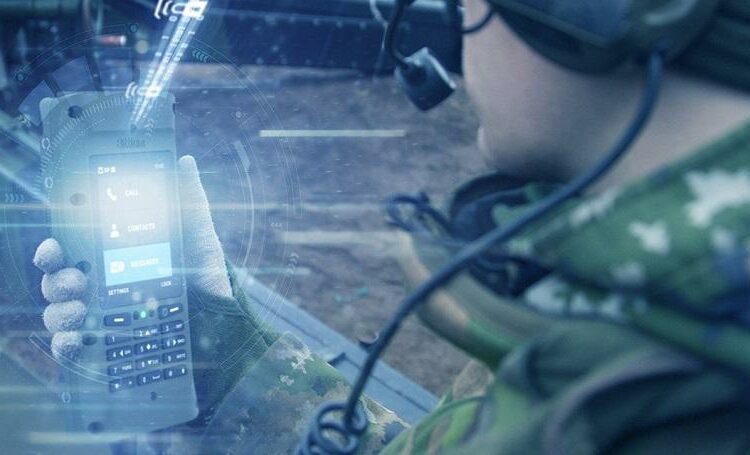Tactical VoIP Has Finally Arrived?

Tactical VoIP Has Finally Arrived?
Author: Jussi-Pekka Pudas, Product Manager, Bittium
The promise of VoIP becoming an integral part of tactical communications networks has been a hot topic for a long time already. However, it seems that only now armed forces are ready to start fully adopting the technology. Naturally, it has happened simultaneously with the coming of other IP-based networks, and the interest and need for the right kind of solutions continues to grow constantly.
But how are VoIP solutions enhancing tactical communications currently, and what are the key considerations when choosing the right solution for your needs? We at Bittium have been pioneers of tactical VoIP already before the 2010s and can help you to dive deeper into the most relevant requirements and features.
COTS Just Won’t Do
The reasons for migrating to VoIP-based communications have always been clear: better performance and easy integration with other IP-based networks. However, the fact is that legacy technologies are many times still being used and the transition to new technologies requires both worlds to co-exist. Hence, military VoIP solutions need to be integrated to existing systems. This is usually a handicap with commercial VoIP products. Many times, products need to be specifically designed for tactical use cases in order to have the desired features and performance, not to mention seamless and easy use.
Commercial solutions can also have other weaknesses:
- Centralized VoIP solutions are vulnerable and offer limited mobility in tactical use
- Configuration changes are needed in the field and those are difficult, or even impossible, to do
- Dynamic handling of simultaneous priority calls is not supported
- Interoperability with network traffic prioritization features such as QoS is not supported
- Commercial solutions are not designed for tough use in the battlespace
Resilience, Interoperability & Mobility for All
Close cooperation with our customers has been one of the factors that has helped us to understand and solve many of the challenges. Since the launch of our first VoIP products, including the Bittium Tough VoIP Field Phone in 2012, our VoIP product portfolio has grown with new products, all specifically designed for tactical communications. In addition to Tough Comnode and Tough VoIP Softphone, Tough VoIP Service plays a significant role in providing resilient VoIP communications for the modern battlespace.
Tough VoIP Service is a distributed solution, meaning that a loss of a single element in a central role will not cripple the service, instead, any node in the system can claim that role. The server entity is typically installed on each network router node, which could be TAC WIN Tactical Router, Tough SDR radios, Tough Comnode or third party server or even embedded PC platform. Each one of the servers can work independently providing local VoIP service to local users, also to third party VoIP clients, and synchronize subscriber information (e.g. presence status) between the other server nodes and clients. Full set of tactical features can be provided without being dependent on any centralized service beyond the local router. This independent operating capability is very important in tactical networks that are mobile by definition. In addition, Tough VoIP Service provides interoperability with the core network VoIP services at the same time.
Once again we have circled back to interoperability. Optimally, VoIP solutions should provide seamless integration to anything from legacy voice radio to mobile networks, for example LTE. With Tough VoIP Service it is possible to offer smooth integration to legacy voice radios using a RoIP gateway, and standard SIP towards other networks. The interoperability can be further enhanced with the management of the different elements through a single system. Our Tactical Network Management toolset is compatible with Tough Comnode networks and nodes, as well as with TAC WIN and Tough SDR networks and nodes and the related waveforms.
Reliable Communication Is the Key
In addition to interoperability, reliability is a must for both the tactical network and its services in order to achieve trouble-free and trusted communication. Traditionally, tactical networks assign priorities for each service (voice, fire commands, data) and services may have priority sub-categories within themselves. Our solution for prioritizing VoIP calls in tactical networks is that VoIP calls not only have a configurable priority within the voice service, but also the TAC WIN adhoc network implements a Call Admission Control system which can manage calls in the network. This means that the user will receive feedback if the network capacity is not sufficient for the call. Also, ongoing low priority calls can be released in case it is required to release network capacity for higher priority calls. As a result, the reliability of the voice service is remarkably improved, and the behavior of the service is more consistent.
Conclusions
We see that tactical VoIP has indeed finally arrived to meet the exponentially growing needs of the mobile battlespace. But not just any product will do. We help our customers by providing leading tactical VoIP solutions that meet the current requirements, and also future requirements through continuous development.
Jussi-Pekka Pudas, Product Manager, Bittium
Since joining Bittium in 2003, Jussi-Pekka has been applying his expertise in software development and testing to telecommunications and world-class Tactical Communications products and systems. In his current position as a product manager for Bittium’s tactical VoIP solutions, he takes pride in delivering solutions that are customer-oriented and make the duties of the end-users easier.
